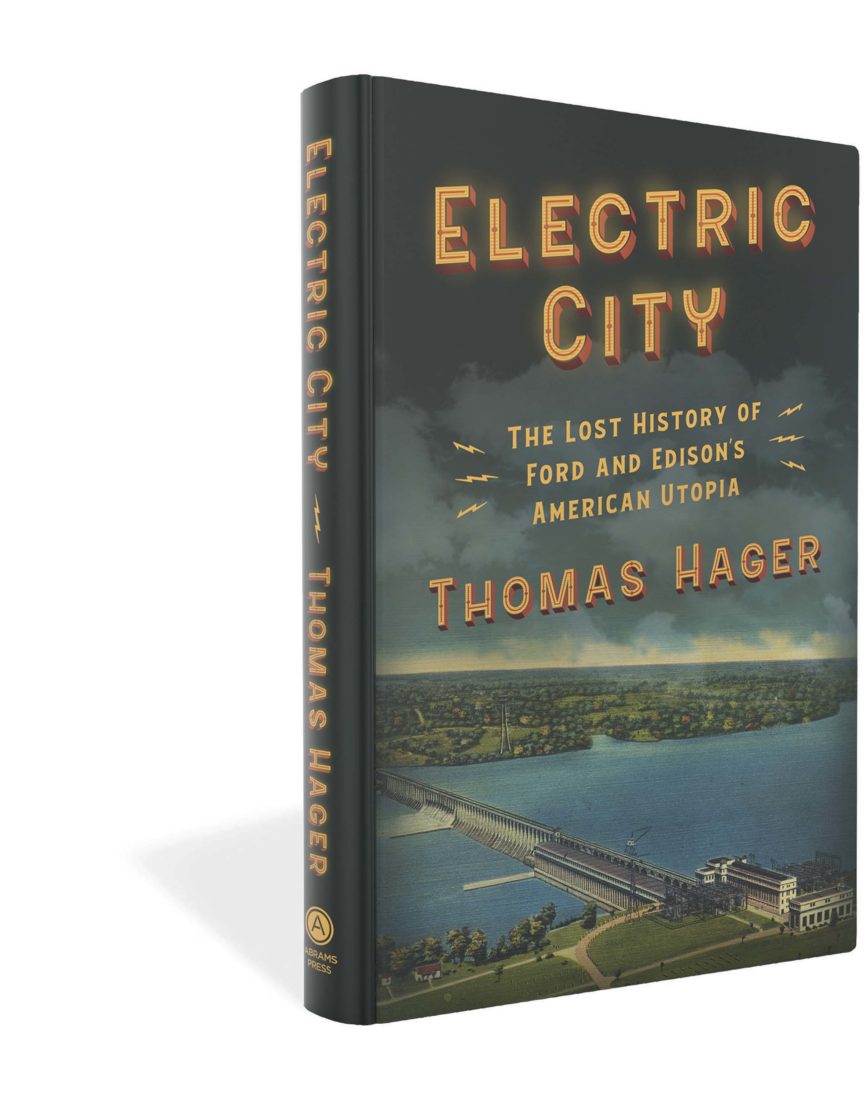Calling the idea audacious is almost criminal understatement. Imagine it: A pristine new megacity rising from the hills, bluffs, and fields of Northwest Alabama, an urban center ten times the size of Manhattan but unlike it and every other city in most every way. Its architects envisioned a unified but decentralized constellation of miniature farms and villages stretching seventy-five miles along the Tennessee River, a shining city atop not one hill but hundreds. Most of its residents would work part of the year in factories and part of it on their own farms, as though with one foot toeing the future and the other planted in the past. Powering it all would be clean renewable energy. If constructed, the dream city wouldn’t just alter Alabama and the South; it had the potential to change the world.
What it also had, unlike most utopian visions, was the potential to actually happen. That’s because its masterminds were “the richest man in the world and the greatest inventor in the world,” as Thomas Hager writes in Electric City, his beguiling history of the City That Almost Was. The Twin Wizards, as they were sometimes called: Henry Ford, whose Ford Motor Company revolutionized transportation, and Thomas Edison, whose inventions—from the light bulb to the motion picture camera—revolutionized daily life. Their years long efforts to found an electrified utopia in and around Muscle Shoals are mostly forgotten now, a quixotic footnote in history. But Hager rightly revives it, delivering an engaging story of high-stakes political intrigue. As “one of the biggest news events of the Roaring Twenties,” he writes, Ford and Edison’s city “was the cause of 138 bills and a decade of attention in Congress, spurred an investment frenzy bigger than anything since the Klondike Gold Rush, changed the direction of urban planning around the world, and helped fuel a movement that came close to electing Henry Ford president of the United States.” Electric City goes one step further, shining a crisp light on the tensions between private and public development with which we still grapple today. Read this book for when Jeff Bezos or Elon Musk comes pitching a space colony.
Ford believed the path to a better world ran through Muscle Shoals. And urban planning visionaries like Frank Lloyd Wright agreed. But Ford was after personal betterment, too: the same kind of spectacular profits he was raking in from automobiles. Ford needed federal buy-in to realize his and Edison’s plan, and Ford’s wealth and influence—he commanded a kind of Trumpian adulation from many Americans—won him support from two presidents and a majority of legislators. Yet one senator—a dour Nebraska Republican named George Norris—couldn’t be cajoled, bought, or bullied. Norris saw straight through the idea’s noble dressing, warning that the scheme would kick open the door “for the use of natural resources by corporations and monopolies without restriction, without regulation, and without restraint.” Much of Electric City’s conflict revolves around this standoff, calling to mind that old Johnny Mercer lyric: “When an irresistible force such as you / Meets an old immovable object like me.” Ford and his allies battered; Norris just hardened. Ford, as was his deplorable wont, started blaming a cabal of “international Jews” for obstructing him, cranking up his public relations machine. But it was essentially Norris, “an aging relic from a nothing state” with a steadfast belief in the sanctity of public resources and the distinction between the private good and the common good, who derailed Ford’s plan.
Utopias, of course, remain always just over the horizon. The point of them, the Uruguayan writer Eduardo Galeano once wrote, is to keep walking toward them. Norris didn’t dislike Ford and Edison’s vision for an electrified, more prosperous Tennessee River valley; he just disliked Ford’s “piratical” route to achieving it. And nine years after the senator scuttled the idea, another president—Franklin Delano Roosevelt—was heralding Muscle Shoals as the birthplace of a “new America.” At the heart of this newer new America was a public—not private—corporation that George Norris helped create: the Tennessee Valley Authority, or TVA, the New Deal entity that brought power and economic development to the region. “Thank God for the TVA,” goes a Jason Isbell chorus. God, and George Norris. And in an indirect way, as Electric City absorbingly shows, Henry Ford and Thomas Edison as well. Progress may often be the realization of utopias, as Oscar Wilde wrote. But sometimes, it seems, progress can also come from evading them.









